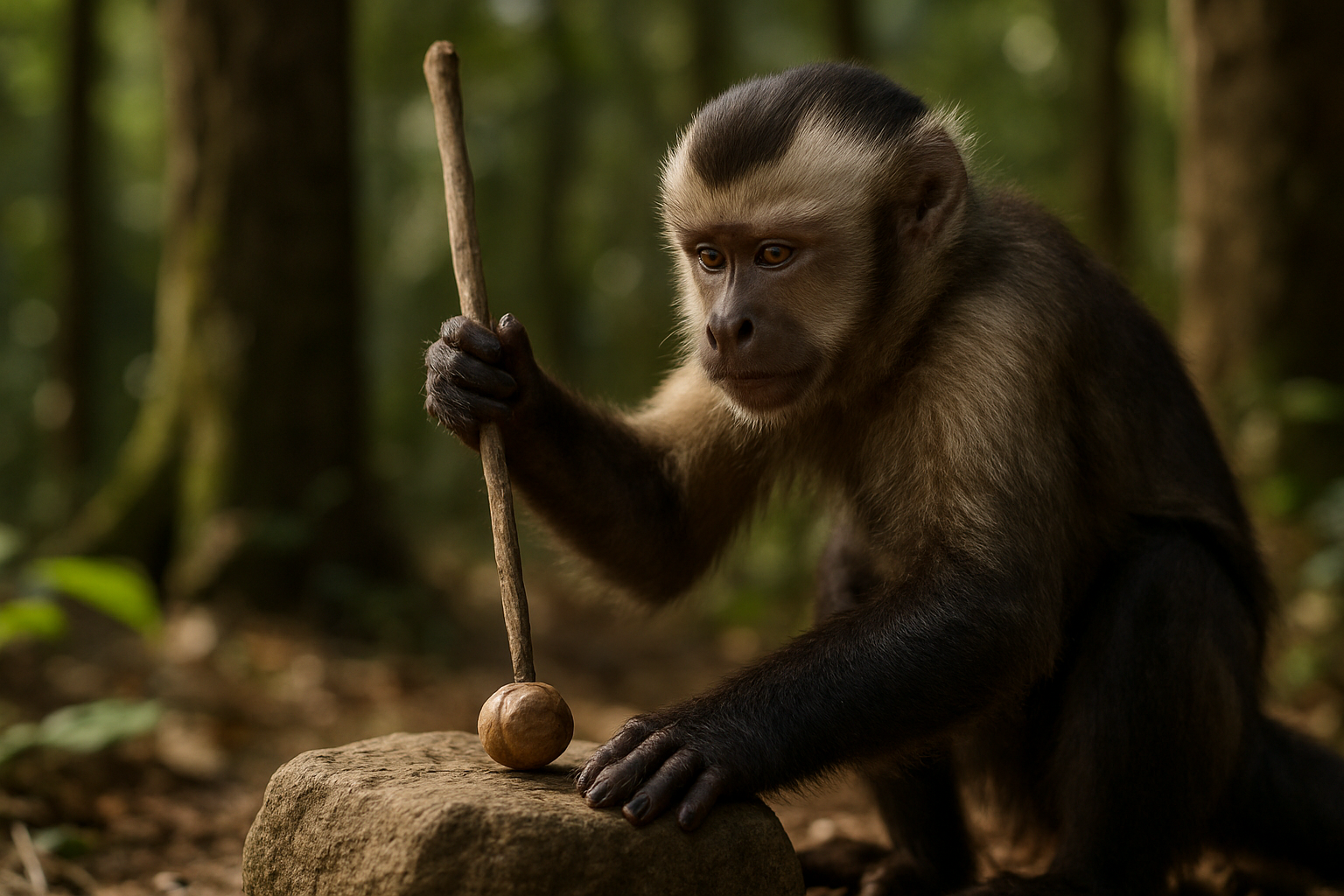Unraveling the Enigma of Capuchin Tool Use
Capuchin monkeys, renowned for their intelligence and dexterity, have long fascinated researchers with their sophisticated tool use. These small New World primates have been observed employing a variety of implements to access food, demonstrating problem-solving skills that rival those of great apes. This article delves into the captivating world of capuchin tool use, exploring its evolution, current research, and implications for our understanding of animal cognition.

The Evolution of Capuchin Tool Use
The story of capuchin tool use begins millions of years ago, with the divergence of New World monkeys from their Old World counterparts. Fossil evidence suggests that the ancestors of modern capuchins first appeared in South America around 30 million years ago. Over time, these primates developed unique adaptations that set the stage for their remarkable cognitive abilities.
One key factor in the evolution of capuchin tool use was the development of their highly dexterous hands. Unlike many other monkey species, capuchins possess pseudo-opposable thumbs, allowing them to manipulate objects with great precision. This anatomical feature, combined with their keen intelligence, provided the foundation for complex tool use to emerge.
Pioneering Research and Discoveries
The first documented observations of capuchin tool use in the wild came in the 1990s, when researchers observed white-faced capuchins using stones to crack open nuts in Costa Rica. This groundbreaking discovery sparked a wave of research into capuchin cognition and behavior, leading to numerous fascinating insights.
Subsequent studies have revealed that capuchins use a wide variety of tools for different purposes. In addition to stone hammers, they have been observed using sticks to probe for insects, leaves as sponges to collect water, and even using certain plants as natural insect repellents. These discoveries have challenged long-held assumptions about the cognitive capabilities of New World monkeys and their place in the evolutionary tree of tool use.
The Complexity of Capuchin Tool Selection
One of the most intriguing aspects of capuchin tool use is the level of sophistication displayed in tool selection and modification. Research has shown that these monkeys are not simply grabbing any nearby object to use as a tool; instead, they carefully choose implements based on specific characteristics.
For example, when selecting stones to use as hammers, capuchins have been observed testing the weight and hardness of different rocks before settling on the most suitable option. They also demonstrate an understanding of the relationship between the size and shape of the tool and its effectiveness for a particular task. This level of discernment suggests a degree of planning and foresight previously thought to be beyond the capabilities of New World monkeys.
Cultural Transmission and Social Learning
Perhaps even more remarkable than the tool use itself is the evidence of cultural transmission among capuchin populations. Researchers have documented distinct tool-using traditions in different groups of capuchins, with specific techniques being passed down from generation to generation through social learning.
This cultural aspect of capuchin tool use has significant implications for our understanding of the evolution of human culture and technology. By studying how these traditions are maintained and spread within capuchin communities, researchers hope to gain insights into the early stages of cultural evolution in our own species.
Implications for Conservation and Captive Care
The discovery of complex tool use in capuchins has had profound implications for both conservation efforts and the care of captive populations. As we come to appreciate the cognitive sophistication of these animals, there is a growing recognition of the need to provide them with enriching environments that allow for the expression of their natural behaviors.
In captivity, zoos and sanctuaries are increasingly incorporating opportunities for tool use into their capuchin enclosures. This not only improves the welfare of the animals but also provides valuable opportunities for public education about primate cognition and the importance of conservation.
Future Directions in Capuchin Research
As our understanding of capuchin tool use continues to grow, new avenues of research are constantly emerging. Current studies are exploring the neurological basis of tool use in capuchins, using advanced imaging techniques to map the brain regions involved in these complex behaviors.
Additionally, researchers are investigating the potential for capuchins to use more advanced tools, such as composite tools made of multiple components. These studies push the boundaries of our understanding of animal cognition and may provide valuable insights into the evolutionary origins of human technology.
In conclusion, the study of capuchin tool use represents a fascinating frontier in animal behavior research. As we continue to unravel the mysteries of these remarkable primates, we gain not only a deeper appreciation for their intelligence but also new perspectives on the cognitive capacities of non-human animals and the evolutionary roots of our own technological prowess.





